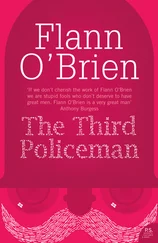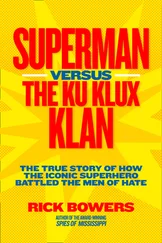The two cities where the first part of the novel is set are described with seeming objectivity (another cascade of details), revealing glimpses of a dream landscape: clouds that hang incredibly low, at nearly the level of lightning rods; twisted, solitary trees (that Arcimboldi, for reasons unknown, calls Oklahomas) loaded with birds and rodents, greenish-black specters in desolate fields; illicit all-night gambling dens; seedy hotels with four beds to a room; farmhouses with barred doors and windows; cowboys who scan the valley from afar without dismounting. Down in the valley, the two cities glitter in the sun; up on the mountain, the cowboy smokes and smiles with an air of sadness, striking the same relaxed, careless pose that we’ve seen in so many movies.
Between the end of the first part of the novel and the start of the second, a washroom door is opened by someone unknown to reveal a dwarf brushing his teeth at a dwarf-sized sink. It’s at precisely this point that the second part begins: a private detective (Sam O’Rourke) kneels at a dwarf-sized sink brushing his teeth and staring at himself in the mirror — which is also dwarf-height — with an expression of infinite sadness on his face. Someone opens the door (presumably the same person who opened the door earlier and found the dwarf) and orders him to go in search of the missing heiress. The image of the detective on his knees brushing his teeth is one to which Arcimboldi will return over and over again: a man shrunk to his true size; the description of the washroom tiles (Hardee-Royston, green and gray flowers on a matte surface); the description of the single lightbulb hanging naked over the mirror; the shadow of the door as it opens; the bulky form in the doorway and the eyes of the stranger, invisible to O’Rourke but in which he intuits a gleam of surprise and fear; the gaze of O’Rourke, first in the mirror (in which he sees only the reflection of the stranger’s legs) and then upon turning to seek the face; voices that echo with strange limpidity; the water that runs in the chipped sink and trickles between the tiles.
O’Rourke’s search is limited to the two cities and the network of farms scattered between them. A single city, concludes Arcimboldi, is by its very nature unfathomable; two cities are an infinity. O’Rourke navigates this infinity with American simplicity and integrity. The senseless deaths (despite the author’s efforts to demonstrate — by the enumeration of causal events — that everything has a hidden meaning as unyielding as fate) follow upon one another with horrifying monotony. O’Rourke’s inquiries lead him to a church, an orphanage, the charred shell of a farm, a brothel. During the investigation, which is like a voyage, he makes new friends and enemies, reencounters forgotten lovers, is nearly killed, kills, loses his car, makes love with his secretary. The conversations that O’Rourke has with policemen, pickpockets, thugs, night watchmen, gas station attendants, informers, whores, and dealers are reproduced in full and concern the existence of God, progress, mathematics, life after death, the reading of the Bible, fallen women and saintly wives, flying saucers, the role of Christ on strange planets, the role of man on earth, the advantages of life in the country over life in the city (clean air, fresh vegetables and milk, guaranteed daily exercise), the ravages of time, miracle drugs, the secret recipe for Coca-Cola, the choice to bring children into this mixed-up world, work as a social good.
As might be expected, the search for the heiress never ends. The cities, A and B, increasingly resemble each other. Mona’s gang, once the ransom is collected, tries to flee but something nameless (and ominous) stands in the way. They end up settling in B, where they buy a nightclub in the suburbs. The nightclub is described as a castle or a fortress: from a secret room the heiress and Chuck watch the sunsets and the Oklahomas stretching into infinity. O’Rourke loses himself doubly: in the cities and in momentous and futile conversations. And yet, at the end of the novel, he has a dream. He dreams that Mona’s entire gang is climbing a flight of stairs. Mona is in the lead and Kansas Jim brings up the rear. In the middle is the kidnapped heiress with Chuck’s arm around her waist. They climb slowly but with steady and unfaltering steps — the stairs are wooden and uncarpeted — until they come to a hallway, dark or faintly lit by a yellowish bulb covered with fly droppings. There’s a door. They open it. They see a dwarf sink. Kneeling at the tiny sink is O’Rourke, brushing his teeth. They remain on the threshhold without greeting him. O’Rourke turns, still on his knees, and gazes at them. The novel ends a few lines later with some disquisitions on love and repentance.
Railroad Perfection (Gallimard, 1964, 206 pages)
Novel consisting of ninety-nine apparently unrelated two-page dialogues. All the dialogues take place aboard a train. But not the same train, or even during the same time period. Chronologically, the first dialogue (page 101) takes place in 1899, between a priest and a clerk for a foreign company; the last (page 59) in 1957, between a young widow and a retired cavalry captain. Following the order in which they appear in the book, the first dialogue (page 9) takes place in 1940, between a landscape painter and a surrealist painter whose nerves are shot, presumably on a train to Marseille; the last (page 205) takes place in 1930, between a woman traveling with two children and an old woman who is deathly ill but who never dies, among other reasons because the dialogue, like those that precede it, is interrupted: in general, the reader encounters conversations that he doesn’t see begin (and whose beginnings he can’t even imagine) and that after two pages will inevitably be cut off. Still, the careful reader will find clues that occasionally explain how a conversation started, what motivated it, the reasons behind it. Although most, at least on the surface, arise from the monotony of the trip, some have a more specific origin: a remark about the crime novel that a passenger is reading, a significant political or social event, a third person who has attracted the attention of two passengers. Each dialogue is given a short title that sometimes informs us of the profession of the speakers or their marital status or the destination of the train or the year or the age of the travelers, but not always, so that some chapters begin simply with a notation of the time: 3 a.m., 9 a.m., 11 p.m., etc. In addition, the careful reader will soon realize (though a second or third reading is often required) that this isn’t a collection of stories or of ninety-nine fragments connected solely by train travel: as if this were a mystery novel, we learn to recognize at least two travelers through the fragments of dialogue, two ambiguous characters who, despite changes of job, age, and sometimes even sex (but then the young woman who works as a secretary at a chocolate factory in the Jura is no such young woman), are the same person, and both are fleeing, or chasing each other, or one is chasing and the other is hiding. It’s also possible to piece together the clues to solve a crime, though the order in which the dialogues are presented tends to muddy the waters (conversation between the prefect of Narbonne and the Turkish intellectual, page 161; conversation between the train conductor and the sailor from Toulon, page 95; conversation between the proofreader whose mother has died and the town architect of Brest, page 51; conversation between the Italian immigrant and the watchmaker from Geneva, page 87; conversation between the fifty-year-old whore and the twenty-year-old whore, page 115); it’s possible to spin a comic tale (conversation between the bride and groom off on their honeymoon, page 27; conversation between the man of independent means and the owner of vineyards in the Roussillon, page 77; conversation between the vaudeville performer and the highway engineer — or is he a German spy? or a Strasbourg bohemian? — page 109); a story of devotion (conversation between the elderly baker and the elderly country doctor, page 153; conversation between the soldier on leave and the woman of mystery, page 163; conversation between the stutterer from Lille and the Paris taxi driver, page 171); the story of a trip — to Spain, the Maghreb? — that ends in the death of the traveler (conversation between the professor of medieval literature and the traveling salesman, page 143; conversation between the woman of mystery and the married woman, page 69; conversation between the twenty-year-old athlete and the twenty-eight-year-old college graduate, page 181; conversation between the bridge player and the Englishwoman of a certain age, page 197); and the story of a house that burned down (conversation between the gravedigger from the south and the gravedigger from the north, page 39; conversation between the housewife who likes to write poetry but doesn’t like to read it and the proofreader whose mother has died, page 119; conversation between the man who has never taken trains and the old man who was an only child, page 191). But the truly important story, the one that somehow encompasses and obliterates and supplants all the others, is the story of the chase. From the beginning, the reader is presented with a number of questions: is the pursuer motivated by love or hatred? is the pursued motivated by love or fear? how much time elapses from the start of the chase until the present day? at the end of the book is the chase still on or has it imperceptibly ceased at some point between 1899 and 1957? is the pursuer a man and the pursued a woman, or is it the other way around? what is the story and what are its outgrowths, elaborations, offshoots?
Читать дальше
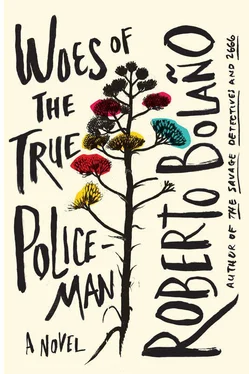
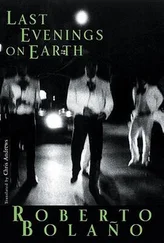
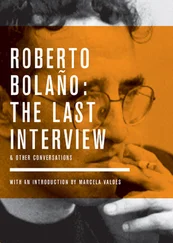
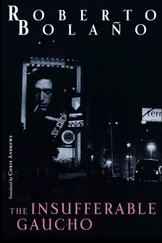


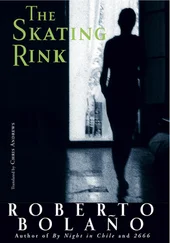
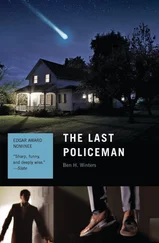
![О Генри - Бляха полицейского О’Руна [The Badge of Policeman O'Roon]](/books/405347/o-genri-blyaha-policejskogo-o-runa-the-badge-of-po-thumb.webp)
